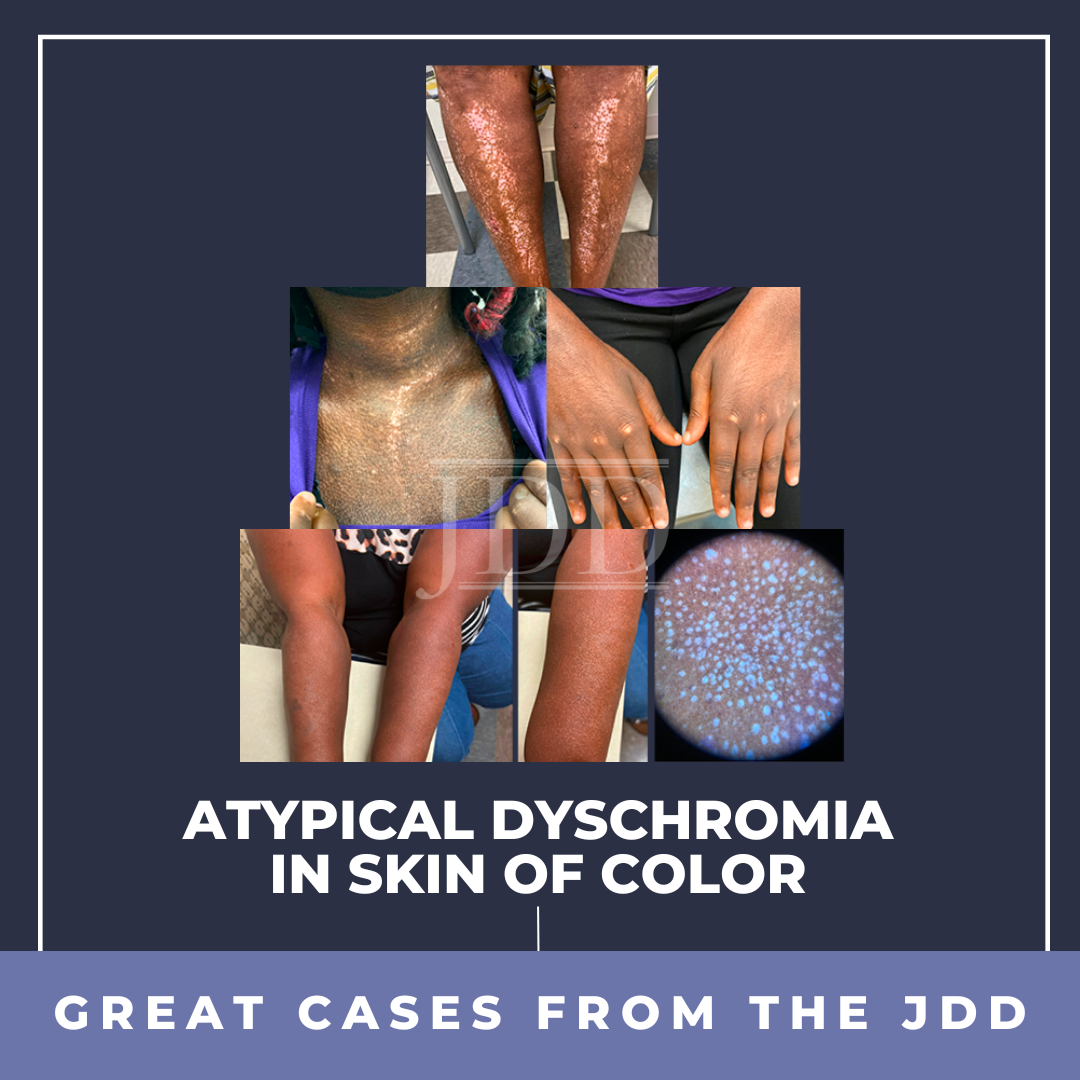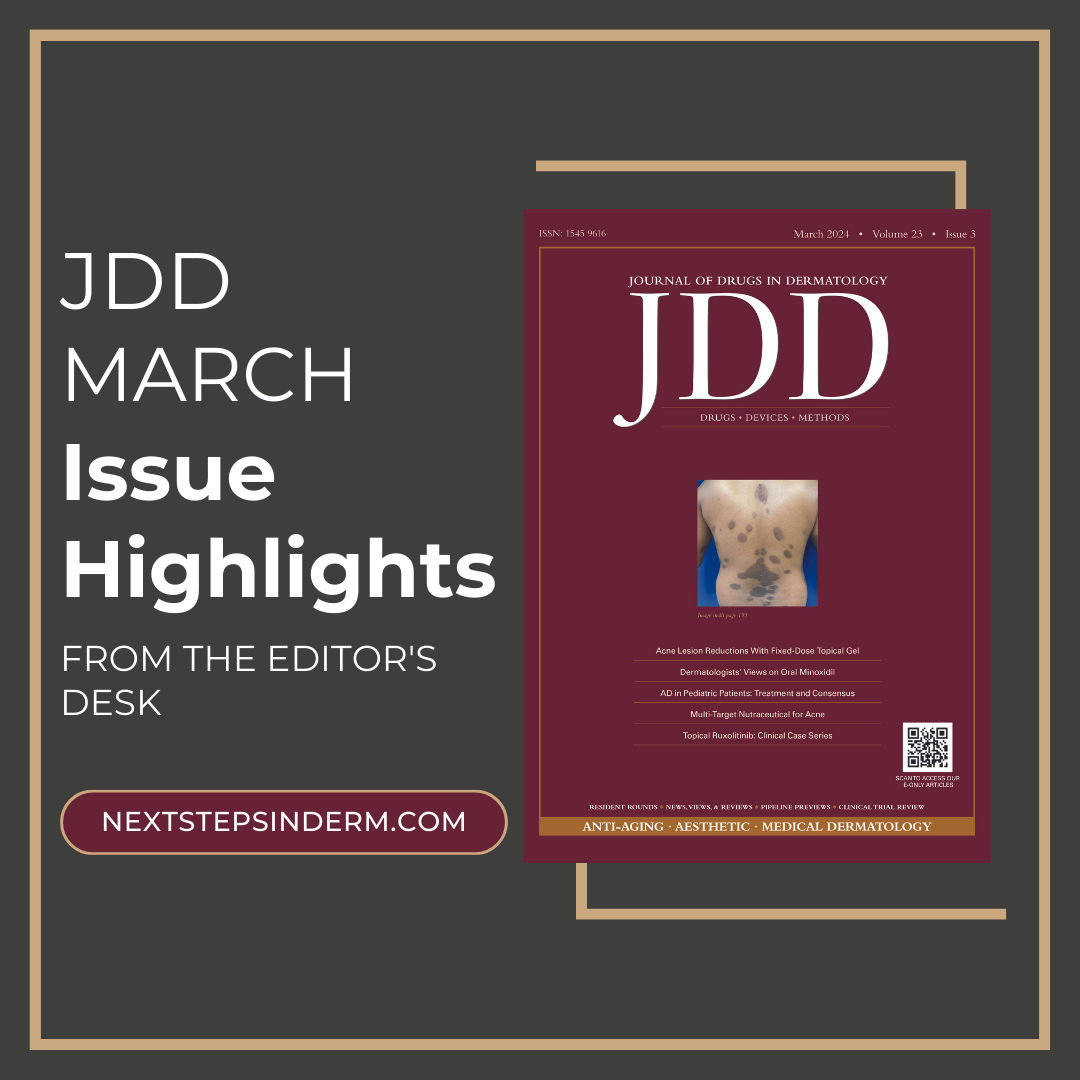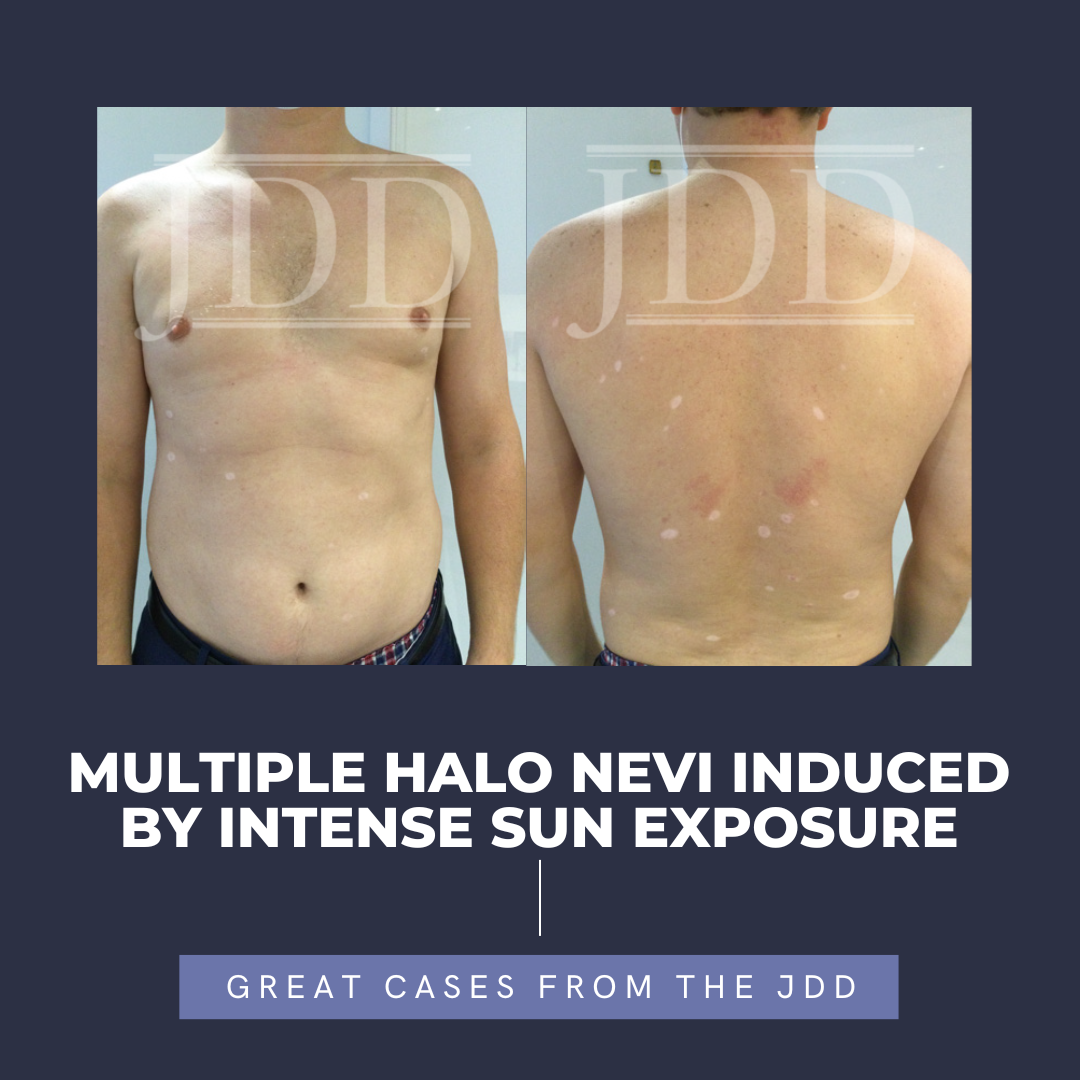Atypical Dyschromia in Skin of Color
 ABSTRACT
Dyschromia is a concern for many patients, especially persons of color. Postinflammatory hypopigmentation and depigmentation can affect all skin types; however, it is more apparent in those with darker skin. Some members of the dermatology community may not comprehensively understand the mechanisms of these reactions and the extent of the psychosocial effect they have on persons of color …
ABSTRACT
Dyschromia is a concern for many patients, especially persons of color. Postinflammatory hypopigmentation and depigmentation can affect all skin types; however, it is more apparent in those with darker skin. Some members of the dermatology community may not comprehensively understand the mechanisms of these reactions and the extent of the psychosocial effect they have on persons of color …
 ABSTRACT
Dyschromia is a concern for many patients, especially persons of color. Postinflammatory hypopigmentation and depigmentation can affect all skin types; however, it is more apparent in those with darker skin. Some members of the dermatology community may not comprehensively understand the mechanisms of these reactions and the extent of the psychosocial effect they have on persons of color …
ABSTRACT
Dyschromia is a concern for many patients, especially persons of color. Postinflammatory hypopigmentation and depigmentation can affect all skin types; however, it is more apparent in those with darker skin. Some members of the dermatology community may not comprehensively understand the mechanisms of these reactions and the extent of the psychosocial effect they have on persons of color … 

 March into groundbreaking dermatological insights with the latest issue of the Journal of Drugs in Dermatology! Explore the prescribing habits of oral minoxidil for androgenetic alopecia, delve into a comprehensive review of botulinum toxin uses, and discover the effectiveness of microneedling for acne scars. Plus, unravel the uncertainties surrounding exosome therapy in androgenetic alopecia. Fro …
March into groundbreaking dermatological insights with the latest issue of the Journal of Drugs in Dermatology! Explore the prescribing habits of oral minoxidil for androgenetic alopecia, delve into a comprehensive review of botulinum toxin uses, and discover the effectiveness of microneedling for acne scars. Plus, unravel the uncertainties surrounding exosome therapy in androgenetic alopecia. Fro …  Explore the February 2024 issue of the Journal of Drugs in Dermatology! Discover groundbreaking research on topics such as novel treatments for melasma, advancements in psoriasis management, gene expression profile (GEP) testing for squamous cell carcinoma, pediatric vitiligo, and many more! Stay ahead of the curve with the latest insights from leading dermatology experts. Straight from the Editor …
Explore the February 2024 issue of the Journal of Drugs in Dermatology! Discover groundbreaking research on topics such as novel treatments for melasma, advancements in psoriasis management, gene expression profile (GEP) testing for squamous cell carcinoma, pediatric vitiligo, and many more! Stay ahead of the curve with the latest insights from leading dermatology experts. Straight from the Editor …  JDD authors present the case of a 38-year-old male who reported to their practice with multiple newly developed halos around 26 existing nevi on his trunk. The halo nevi developed after the patient, who lived in the northeast, spent 2 months on a lake in Alabama, with intense heat and sun exposure. This case is remarkable in that it points to ultraviolet exposure as one instigating factor in the …
JDD authors present the case of a 38-year-old male who reported to their practice with multiple newly developed halos around 26 existing nevi on his trunk. The halo nevi developed after the patient, who lived in the northeast, spent 2 months on a lake in Alabama, with intense heat and sun exposure. This case is remarkable in that it points to ultraviolet exposure as one instigating factor in the …